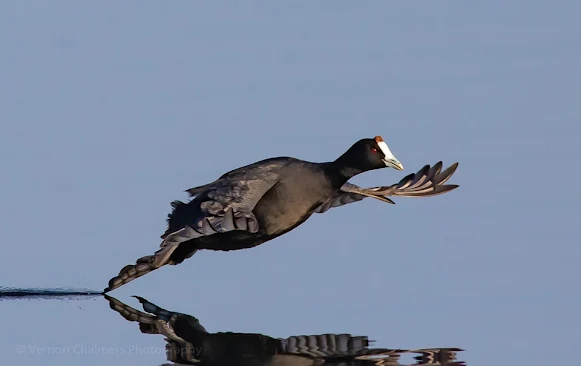Learning the Canon Autofocus System (for Birds in Flight Photography)
 |
| With Canon EOS 7D Mark II : AI Servo Mode: Large Zone AF / Case 1 |
Canon Autofocus System
Inside the modern Canon EOS / EOS R camera (and all other brands for that matter) is an Autofocus (AF) System for assisting the photographer for tracking and capturing any type of shot (not just action).
Some of these systems use a basic 9-Point deployment and it can go up to an advanced and user-configurable 65-Points (and more) with various AF Cases and AF Mode (different options for tracking a variety of static / moving subjects).
The new Canon EOS R System bodies (Canon EOS R3 / EOS R5 / EOS R6) features Canon's Dual Pixel CMOS II on-sensor Autofocus with over 5500 AF-Points).
Canon Dual Pixel CMOS AF II in the EOS R5 and EOS R6 Explained >>
I personally don't mind if I'm shooting with any of the current Canon AF Systems. More important is to get familiar with the various configurations of the AF system, its responsiveness and tracking ability vs the photographer's skill set and physical responsiveness.
I've seen many new photographers improving their action photography over time and its basically two main areas:
Getting to know the Camera and AF System
This is something that can take months to learn and to develop an intuitive understanding of the camera / AF system's ability with different action genres and in different light conditions.
Anticipation and tracking fast moving subjects
New action photographers are quickly discouraged when they fail to even see the subject (i.e. bird in flight) in the camera's viewfinder. It can take three to six months of regular weekend shooting for mastering the anticipation and tracking of fast flying birds (in relation to physical responsiveness and getting to know the camera's various support systems).
Article: Tracking Variables for Improved Birds in Flight Photography View>>
In my Birds in flight photography skills development training (and other training) I'm more than aware of the different challenges that new photographers may have, different cameras and different levels of physical reflexes for learning and mastering fast action photography.
During training I use the Lightroom Show Focus Points Plugin for identifying and demonstrating to new photographers exactly where they / their camera placed the AF points relative to the moving subject.
The first of the two images (top image) is the post-processed image of a common starling captured last week at Woodbridge Island with the Canon EOS 7D Mark II / EF 400mm f/5.6L USM lens.
The second image (below this paragraph) is a cut and paste from Lightroom showing the AF points array of the Canon EOS 7D Mark II 's 65-Point AF points superimposed on the common starling image. The two boxes with dark red and black borders are the two AF points with which focus was achieved. The red and white boxes is the specific zone I selected (for moving subjects in this case).
On the right of the image is the Focus Information and Legend section informing the photographer exactly what exposure settings / AF settings was used to capture the subject.
 |
| Adobe Lightroom Show Focus Point Plugin for AF Tracking and Exposure Assistance |
Lightroom AF-Point Plugin
The Lightroom AF-Point Plugin is an essential part of the developing photographers learning and is freely available for most current and older versions of Lightroom. For more information on the Lightroom Show Autofocus Points Plugin
Go Here>>
Digital Photo Professional (DPP)
Canon's own Digital Photo Professional (DPP) editing and post-processing suite will have a similar function albeit with much less data. More information on downloading and using Digital Photo Professional (DPP) 4.16 for PC and Mac
Go here>>
Testimony of the Modern Autofocus System View
Birds in Flight Photography Training Cape Town View







